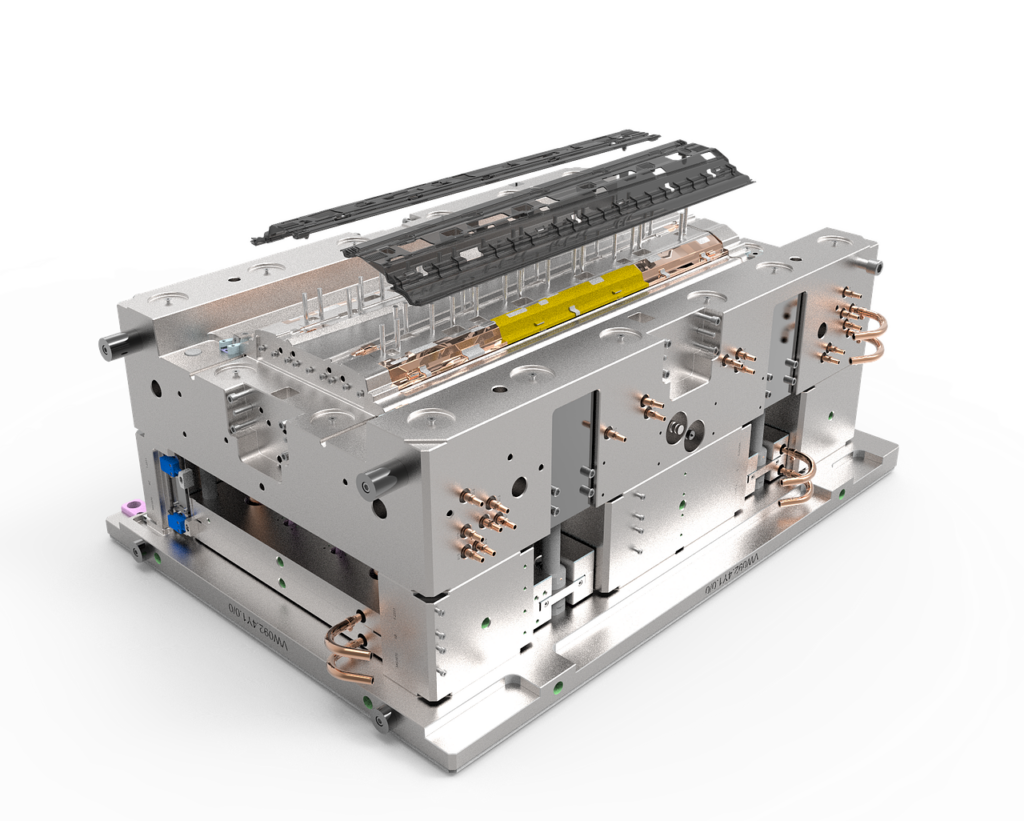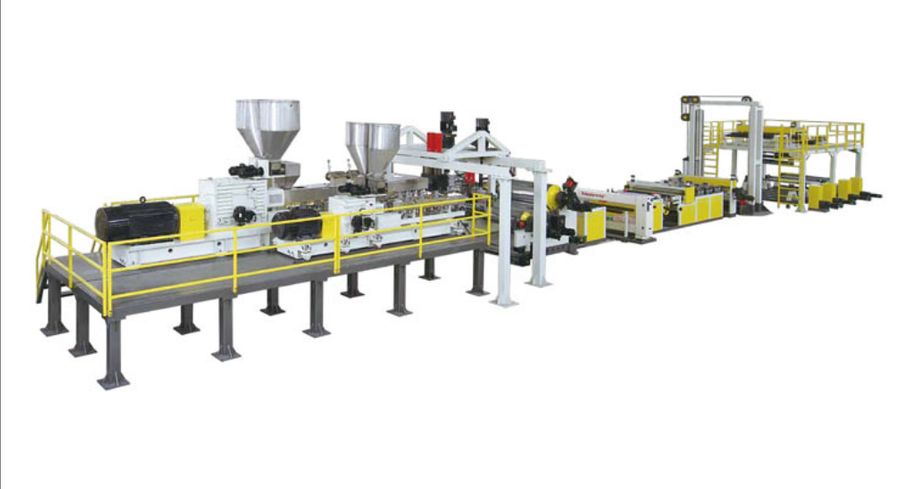Unlike materials like wood and metal, plastic enjoys the perks of low cost and flexibility. This is why it is widely used for domestic and commercial purposes.
A wide range of plastic manufacturing processes have been introduced to cover multiple applications, and the demand for plastic machines is rising. It is essential for the engineering and commercial entities to stay in the knowledge loop. Learning about the latest plastic equipment and the new developments helps them stay on track and prepare for the future.
Table of Contents
Plastic machines: demand and market share
Factors to consider when choosing a plastic machine
Types of plastic machines
Conclusion
Plastic machines: demand and market share
Given the sheer demand for plastic products, the industry is seeing significant demand for plastic manufacturing equipment. This is one of the reasons why Mordor Intelligence forecasts that the market for plastic machines will hit USD 42.44 billion by 2026, registering a CAGR of 5.24% from 2021 to 2026.
Factors to consider when choosing a plastic machine
The key for manufacturers to succeed in the market is to choose the right plastic machinery. They must strive for high-efficiency, high-speed, and energy-saving operations.
Some factors to overview before choosing a plastic machine include:
Lead time
Calculating lead time is imperative in all manufacturing industries. The companies relying on plastic machinery should determine the time taken from the project conception to completion. This enables them to estimate when to launch their plastic product in the market.
Knowing when you need the products is essential to choose the right plastic machine. This is because some equipment produces parts within a day, while in some cases, setting up for a high volume production will take days or months.
Material
Materials are a primary consideration that helps in selecting a viable plastic machine. Determining the physical characteristics of the materials will allow factory owners to narrow down the choices. Temperature, assembly, and chemical resistance are some variables of a material that will impact the choice of its manufacturing equipment.
It is essential to note that some materials are best-suited to specific plastic manufacturing equipment. High-density polyethylene (HDPE) or polyethylene terephthalate (PET), for instance, are easily crushed by a plastic crusher machine blade. Hence, choosing a quality plastic crusher machine can strategically improve the desired product characteristics.
Similarly, polypropylene (PP) is an injection molding material that produces items with glossy surfaces when properly manufactured. It is commonly used to produce items in the food storage and packing industry because it does not blend chemicals in the food. Plexiglass or acrylic, polycarbonates, and polyetherimide are some other materials supported by injection molding machines.
When finding the material best suited for a given plastic machine, it is important to look at the primary properties of the material and the desired products.
Form
Features like tolerance requirements, internal features, and geometric complexity should be scrutinized to determine an efficient and economical manufacturing process. Some plastic products may require an optimized design to make production economical.
Volume/cost
Knowing the production volume is immensely important when choosing plastic machinery. Some mechanisms, like the ones powered by plastic injection molding machines, require high upfront costs for setup and tools. However, they produce inexpensive basic parts.
In contrast, low-volume manufacturing processes, such as the CNC machines, have low initial costs, but the cost per part is higher due to less automation and slow cycle times.
Molds
A mold determines the pattern in which the material will be shaped. Plastic molding involves pouring molten plastic into a container where it hardens in a customized shape. The first step is to design the desired model or hire a professional to design a model according to the specific requirements. Upon completion, it is essential to check that the mold fits properly in the plastic machine.
The structure you want to produce will impact your choice of plastic machinery. These molds are made from various plastic mold plates, blocks, inserts, and metallic components. It is imperative to conduct multiple mold trials to ensure that the chosen plastic machinery is a good option.
Types of plastic machines
Plastic machines cover a broad range of equipment. From a plastic molding machine to recycling, shredding, and everything in between, a wide variety of equipment is available nowadays. Once a manufacturer has determined the purpose and annual targets, it is time to analyze the industry and plastic molding machinery that fits the bill.
Following are the primary categories of plastic machines being used nowadays:
Extrusion machine
The plastic extrusion machine is indulged in extracting molten plastic from a fixed-shape extrusion port. Materials like polypropylene, polystyrene, and nylon are passed across a dye, giving them a seasonal shape. The parts are later cooled to maintain their shapes. The extruders are mainly used for producing parts with a consistent cross-section, such as pipes, rods, drinking straws, and curtain tracks.
Manufacturing segments like healthcare, automotive, and packaging highly demand plastic extruder machines. It is exhibited by the fact that the global market size for this machinery was valued at USD 6,303 million in 2019. It is forecast to reach USD 7,930.4 million by 2027, registering a CAGR of 4.5% from 2020 to 2027.
Advantages
- Thermoplastics can repeatedly undergo hardening and melting.
- It provides considerable flexibility for manufacturing the products.
- It allows for post-extruder manipulation.
Disadvantages
- The expansion of plastic can later disrupt product dimensions.
- The nature of the process limits the products it can manufacture.
Injection molding machine
Injection molding machines are used for the massive production of plastic parts. The object being molded is inserted into a heated barrel, where it is blended and injected into a mold cavity. The liquid plastic cools and takes the shape of the cavity.
The growing innovation in injection molding machine designs, coupled with increasing power and operational capabilities, has made a diverse range of machines available to the market. As per Fortune Business Insights, the global injection molded plastics market is projected to grow from USD 357.34 billion in 2021. It is expected to reach USD 476.46 billion in 2028, registering a CAGR of 4.2%.

Advantages
- It allows producing large volumes of complex, uniform parts.
- Over 25,000 engineered materials are compatible with its processing technique.
- The cycle lasts between 10 and 120 seconds, allowing massive production.
- Scraps can be reground, melted, and reused.
- It offers high repeatability and relatability.
Disadvantages
- Complex molds cause longer lead times.
- Custom tooling results in higher initial costs.
- Design changes are costly.
Plastic recycling machine
Recycling machines are used to shred and granulate plastic and other materials. They reduce the size of plastic pieces so other plastic machines can further recycle them. The waste turns into pellets that can be reused in the molding process. They can also be used in profile production, injection molding, and production of plastic sheets.
Maximize Market Research recently evaluated the market potential of recycling machines. They anticipate the total revenue to grow at a CAGR of 5.40% from 2022 to 2027, reaching USD 389.9 million by 2027. Recycled plastic is the best option to reduce plastic pollution, improve eco-efficiency, and save energy.
Advantages
- Pellets are multi-purpose and help manufacture many products.
- Less plastic waste ends up in landfills.
- The pellets are easy to ship and handle.
Disadvantages
- It does not align with the budget of some manufacturers.
- Recycled pellets may be of low quality.
Blow molding machine
The blow molding machine is used to produce hollow thermoplastic products. The process starts by melting down the plastic and creating small coupons. They are then added into a mold, heated until they become liquid, and filled with air. The pressure built from air pushes out soft plastic that molds like a balloon. When the plastic cools, it retains the shape of the mold, and the part is released.
The primary blow molding machine applications include producing soft drink bottles, plastic cans, wide-mouth jars, and containers. According to Allied Marketing Research, the market size is expected to reach USD 6,878.6 million by 2030, registering a CAGR of 3.8% from 2021 to 2030.

Advantages
- It has a cost-effective production method.
- It is used for producing a vast array of products.
- It allows a substantial increase in production capabilities.
- It allows quick manufacturing and high-volume outputs.
Disadvantages
- The production highly depends on petroleum.
- It needs more resources, and streamlining the process is difficult.
Conclusion
With a growing global plastic industry, there are many options when choosing plastic machinery for your factory. This guide covers the highly demanded plastic machines and the key factors to consider when investing in one. The specifications will allow wholesalers to narrow down their selection. However, keep in mind that an adept manufacturer should always study the fine details of the machine, compared with their production requirements, and then make a purchase decision. For more information on plastic machines and exploring the available equipment, feel free to check out Chovm.com.




